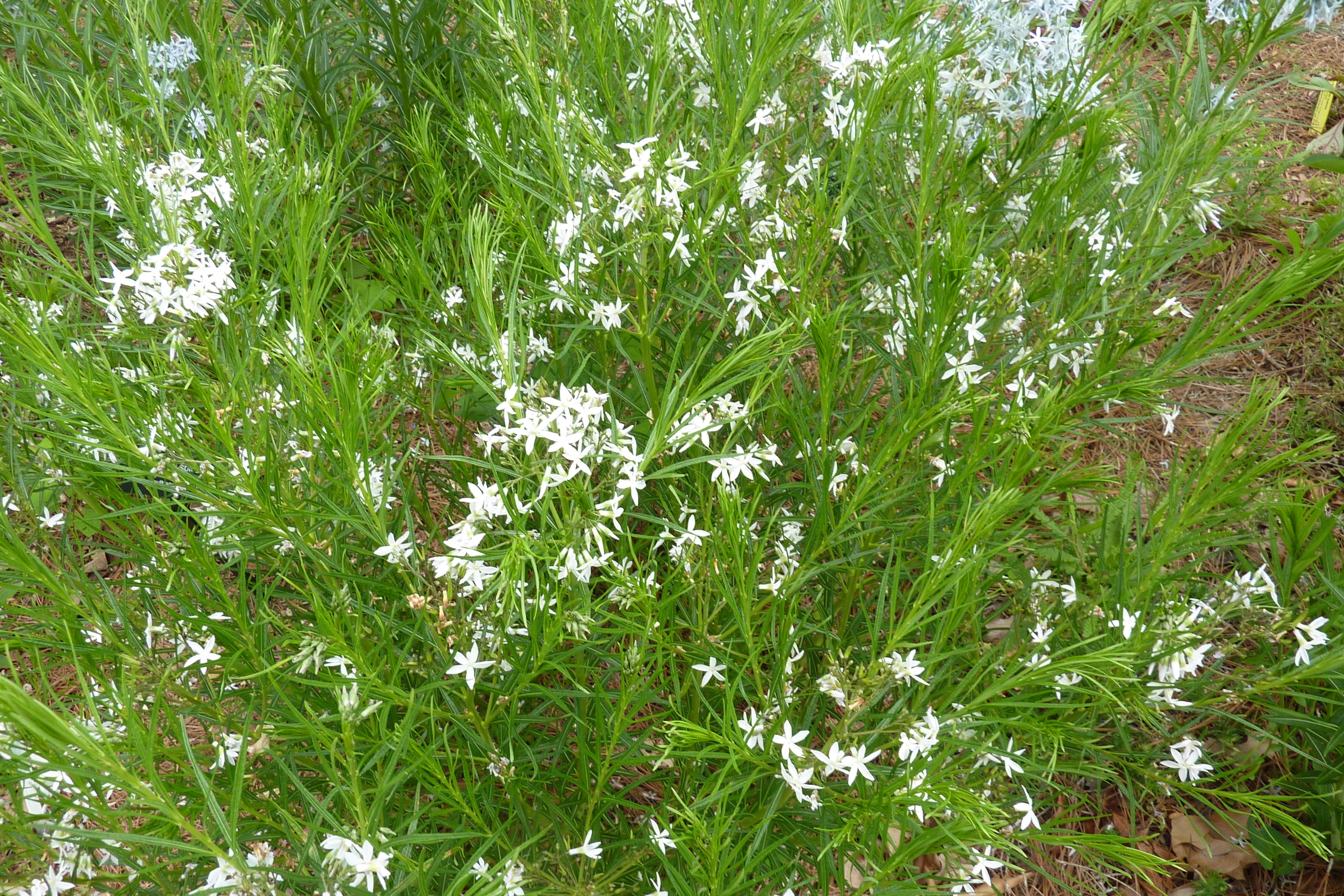Amsonia ciliata
Approx. 0.5 litre pot
About this cultivar:
Amsonia ciliata is a clump-forming perennial that is native from North Carolina to Florida west to Missouri, Arkansas and Texas. It is generally found in sandy soils. Terminal clusters of star-like, light blue flowers bloom in mid spring (May) atop generally erect stems clad with narrow, almost needle-like, green leaves. Foliage turns attractive shades of yellow in autumn. This plant is commonly called bluestar or fringed bluestar or downy amsonia.
Specific epithet means hairy-margined in reference to the fringe of hairs found on new leaves and plant stems (hence the sometimes use of fringed or downy in the common name).
- Position: Full sun, partial shade
- Soil: Almost any soil but prefers sandy, dryer soil.
-
Flowers: May, June, July
- Other features: -
- Hardiness: H5 - Hardy in most places throughout the UK even in severe winters (-15 to -10°C)
- Habit: Clump forming
- Foliage: Deciduous
- Height: 60 - 90 cm (2 - 3 ft)
- Spread: 60 - 90 cm (2 - 3 ft)
- Time to full growth: 2 to 5 years
- Plant type: Herbaceous Perennial
- Colour: Blue, white, green
- Goes well with: Geranium, Crocosmia, Rosa
About this genus:
Amsonia are clump-forming perennials with milky sap (containing latex), lance-shaped leaves and terminal panicles of small, starry blue flowers in spring and summer. They are not invasive, easy in any soil or situation, slug and snail resistant, fully hardy, and flower reliably each year. They should be a garden staple! They are named after Charles Amson, an 18th-century physician from Virginia, but are often commonly named Blue Star.Try them at the front of the border, or use multiple clumps to form ground cover. Good combinations include ground cover plants or clumping plants like Geranium, specifically Geranium psilostemon. The subtle foliage and blue flowers can serve as an attractive foil for more showy plants like Crocosmia or some Roses.


